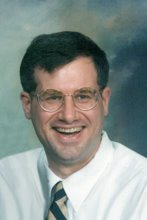This week in LIT 6932 (Time, Space, and SF) we're discussing Bruce Sterling's "The Gernsback Continuum," John Varley's "Air Raid," and R. A. Lafferty's "Slow Tuesday Night," plus Edgar Allen Poe's "The Philosophy of Composition." Herewith some comments:
1. "The Gernsback Continuum" is definitely postmodern according to the simplest definition, because it is a critique of and reaction to modernism -- specifically, the modernism of pulp sf courtesy of Gernsback and John W. Campbell (whom Isaac Asimov described, in The Early Asimov, as wanting "big men solving big problems with big ideas and big machines"), illustrated by the alternate universes of Earth-Tesla and Tom Strong; and the postwar era, like Donald Fagen's beautiful album The Nightfly, particularly the songs "New Frontier" and "I.G.Y." and
I'm a fan of modernism, because I was raised an Enlightenment liberal by Asimov and Heinlein and Clarke. I remember the good old days before the defeats in Vietnam and the War on Poverty; back in 1950-1965 when we were actually making progress on civil rights and eliminating poverty and reducing inequality; back when people worried that the government's biggest problem would be figuring out how to spend the surplus. I wouldn't have a problem with someone telling me "John, we've forgotten to take our food pills." :-D
2. "Air Raid" was made into the movie Millennium. It takes a very dystopian view of the future, and there is sort of a colonial/exploitive relationship between the time travellers and our present; on the other hand there is a similar-but-opposite relationship between the pollution and waste of our time and the problems of the future. (Another paradox concerns the film itself as a product -- one reviewer described it as "smart and moronic at the same time.")
This would be a great text to pair with "Vintage Season," and the fact that the latter story was also made into a film is just icing on the cake! (In fact, I'm not sure why we're not reading them both during the same week.)
3. "Slow Tuesday Night" gives yet another view of the future, by simply extrapolating present trends the same way Heinlein did in 1950 (and again in 1965 and 1980) in "Pandora's Box" and "Where To?" I am working a paper comparing it to two similar works by Fred Pohl -- The Age of the Pussyfoot and "Day Million" -- and Edgar Allen Poe's "Mellonta Tauta." All these works extrapolate present-day trends and try to project a future that is radically different from the present at least quantitatively. "Slow Tuesday Night" shows us a world moving at breakneck speed; "Day Million" depicts a society of genetically-engineered immortals, each of which has gigawatts of power and dozens of artificial intelligences at their casual disposal; The Age of the Pussyfoot depicts a society with somewhat less advanced A.I.'s and biomedical technology, but still significantly advanced over our own, and with the consequences of centuries of relatively "mild" inflation; and "Mellonta Tauta" simply emphasizes various aspects of strangeness and discontinuity between the future world of 2848 and the past/present world of 1848.
4. Poe's "The Philosophy of Composition" is a classic explication of narrative fiction, particularly short-story writing, just as Raymond Chandler's "The Simple Art of Murder" is for the detective story (and Dr. Gideon Fell's lecture in Chapter 17 of The Three Coffins is for locked-room stories). Poe says that the story-writer must first figure out what sort of effect he wants to produce, and then bend every effort, use every trick that will fit, and calculate every phrase in the story, in order to produce the maximum of that effect upon the reader. (H. Bruce Franklin claims that Poe's stories fall into two categories: those in which the effect is an emotion, and those in which the effect is an idea.)
Well, /d/u/h/ of course! This is good practical advice. And the three pieces of fiction for this week all do that. As a formalist and structuralist, I look at the elements of style in the prose of each one; it's part of my job.
Sunday, February 11, 2007
Subscribe to:
Comments (Atom)






